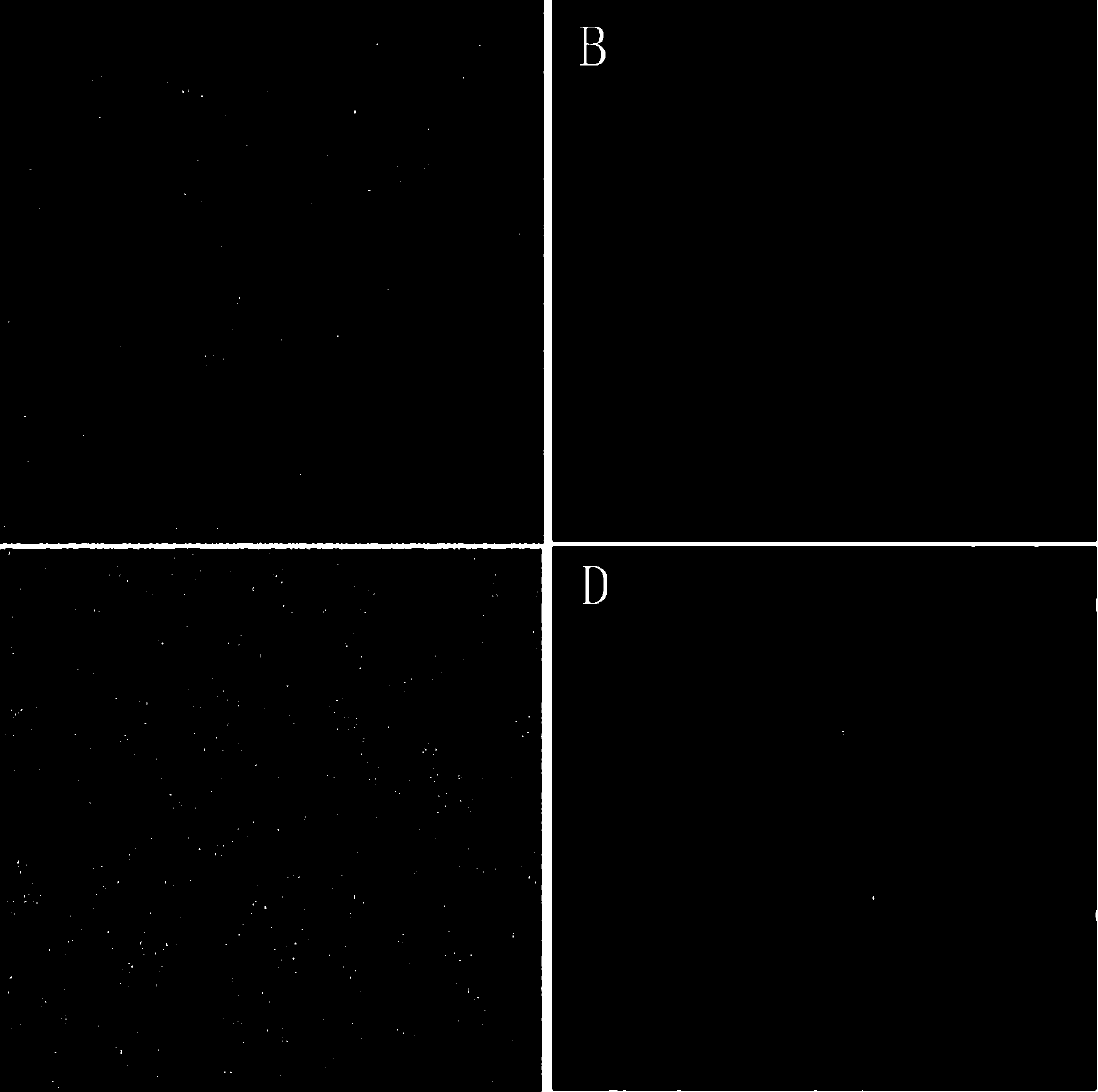SiRNA (small interference Ribonucleic Acid) for targeted inhibition on expression of esophagus cancer EGFL6 gene, constructed expression vector and application
A technology of gene expression and RNA interference, which is applied in the fields of biomedicine and molecular biology, can solve the problems of difficult and convincing cell experiments, achieve the effect of small immune response and improve transfection efficiency
- Summary
- Abstract
- Description
- Claims
- Application Information
AI Technical Summary
Problems solved by technology
Method used
Image
Examples
Embodiment 1
[0040] Example 1: Designing an siRNA sequence that targets and inhibits the expression of the EGFL6 gene in esophageal cancer cells.
[0041] According to the mRNA sequence of EGFL6 gene in esophageal cancer cells (NM_015507.4), 3 groups of siRNA sequences targeting EGFL6 gene expression and control siRNA sequences were designed, and one siRNA sequence with the best interference effect was screened out, named siEGFL6. The specific siRNA sequence is as follows, wherein siEGFL6 is an effective interference fragment group, and siNC is a negative control group.
[0042] si EGFL6:5'-GGAAGCUACUACUGCAAAUTT-3';
[0043] 5' — AUUUGCAGUAGUAGCUUCCTT — 3'.
[0044] si NC: 5' — UUCUCCGAACGUGUCACGUTT — 3';
[0045] 5' — ACGUGACACGUUCGGAGAATT — 3'.
[0046] Through in vitro transfection of esophageal cancer cell lines, the above-mentioned sequences with the highest transfection efficiency were selected by Real-time PCR and Western-blot methods. The sequence can effectively inhibit the ex...
Embodiment 2
[0047] Example 2: Design and synthesis of oligonucleotides: The sense strand and antisense strand of shRNA were designed and synthesized with the siRNA sequence designed in Example 1. The Loop structure in the shRNA is selected from "c TCAAGAGA" and "TCTCTTGAg", and Age I and EcoR I restriction sites are added to the 5' end, respectively, and the sequence is synthesized by Invitrogen. The specific shRNA sequence is as follows:
[0048] pLK sh EGFL6-1 (sense strand): 5'-CCGG GGAAGCUACUACUGCAAAUTTTTCAAGAGAUAAACGUCAUCGAAGGAA TTTTTTT GGTACC-3';
[0049] pLK sh EGFL6-2 (antisense strand): 5'-AATT GGTACC AAAAAA TTCCUUCGAUGAUGACGUUUATCTCTTGAA AAATTGCAGTAGTAGCTTCC-3';
[0050] pLK sh control—1 (sense strand): 5'-CCGG UUCUCCGAACGUGUCACGUTT TTCAAGAGAAATTCTCCGAACGTGTCACGT TTTTTTT GGTACC—3';
[0051] pLK sh control—2 (antisense strand): 5'-AATT GGTACC AAAAAA ACGUGACACGUUCGGAGAATTTCTCTTGAA AAACGTGACACGTTCGGAGAA-3'.
[0052] The EGFL6 lentiviral packaging vector constructed by pLK sh EGFL...
Embodiment 3
[0054] Example 3: Construction of an interference lentiviral vector that targets and inhibits the expression of esophageal cancer EGFL6 gene: a schematic diagram of the structure of the lentiviral vector pLKO.1 puro is shown in figure 1 shown. The vector contains a U6 promoter, which can continuously promote the expression of downstream genes in host cells and continuously express small interfering RNAs with interfering effects. The vector also contains a CMV promoter, which can drive the expression of fluorescent protein EGFP, which is convenient for the detection of transfection efficiency and infection efficiency.
[0055] The lentiviral vector pLKO.1 puro was double-digested with Age I and EcoR I to linearize it. After gel purification and recovery, the annealed product obtained in Example 2 was ligated with T4 ligase overnight at 16°C, and transformed into competent bacteria. Recombination-positive clones were taken, and after transformation and screening, they were sent...
PUM
 Login to View More
Login to View More Abstract
Description
Claims
Application Information
 Login to View More
Login to View More - R&D Engineer
- R&D Manager
- IP Professional
- Industry Leading Data Capabilities
- Powerful AI technology
- Patent DNA Extraction
Browse by: Latest US Patents, China's latest patents, Technical Efficacy Thesaurus, Application Domain, Technology Topic, Popular Technical Reports.
© 2024 PatSnap. All rights reserved.Legal|Privacy policy|Modern Slavery Act Transparency Statement|Sitemap|About US| Contact US: help@patsnap.com










